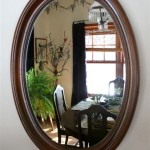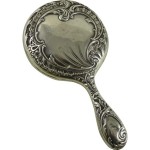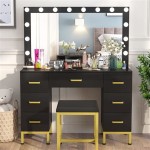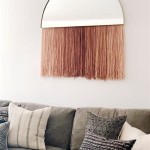How To Look Through A Two-Way Mirror
Two-way mirrors, also known as one-way mirrors or half-silvered mirrors, create an intriguing optical illusion. They appear reflective on one side and transparent on the other, depending on the relative lighting conditions. This property allows for observation from a brightly lit surveillance room into a dimly lit observation room, while appearing as a regular mirror to those within the observation room. Understanding the principles behind this phenomenon and employing a few simple techniques can help determine if a mirror is, in fact, two-way.
1. The Science Behind Two-Way Mirrors
Two-way mirrors function based on the principle of partial reflection. A thin layer of metallic coating, usually silver or aluminum, is applied to a sheet of glass. This coating is so thin that it reflects approximately half the light that strikes it while allowing the other half to pass through. The perceived reflectivity or transparency depends on the difference in light levels on either side of the mirror.
In a typical surveillance setup, the observation room is brightly lit, and the surveillance room is kept relatively dim. The bright light in the observation room reflects off the mirror's surface back into the room, making it appear like a regular mirror to those inside. Conversely, some of the dim light from the surveillance room passes through the mirror, allowing observers to see into the observation room.
2. The Fingernail Test
One of the simplest methods for testing a suspected two-way mirror is the fingernail test. Place the tip of your fingernail against the surface of the mirror. If there's a noticeable gap between your nail's reflection and your actual nail, it's likely a standard, first-surface mirror. If, however, the reflection appears to touch your fingernail with almost no gap, there's a good chance it's a two-way mirror. This is because the reflective layer on a two-way mirror is applied behind a layer of glass, creating a small distance between the reflective surface and your fingernail. This gap is less apparent due to the light passing through the glass.
3. Observing Light Differences
Pay close attention to the lighting conditions around the mirror. If the area behind the mirror appears unusually dark, it might house a hidden observation area. This darkness is essential for maintaining the illusion of the two-way mirror. Try turning off the lights in the room where you are and observing the mirror. This can sometimes make it easier to see through to the other side, as the light difference is further exaggerated.
4. Using a Flashlight
A flashlight can be a helpful tool in determining the nature of a mirror. Shine the light directly onto the mirror's surface. If it's a two-way mirror, the light should partially pass through, illuminating the observation room behind. This might reveal the presence of cameras or observers. Be aware, however, that some advanced two-way mirror setups might use specialized coatings or filters that minimize light transmission, making this test less reliable in those cases.
5. Cupping Your Hands Around Your Eyes
Similar to the flashlight technique, cupping your hands around your eyes can block out some of the ambient light reflecting from the mirror’s surface. This can help you see through to the other side, especially if the observation room is even slightly lit. This method is particularly useful in environments where using a flashlight might attract unwanted attention.
6. Listening Carefully
While not directly a visual method, listening attentively can also provide clues. If the mirror is part of a surveillance setup, there might be subtle sounds emanating from the observation room. These could include muffled voices, the whirring of electronic equipment, or the clicking of cameras.
7. Seeking Professional Assistance
In situations where absolute certainty is required, consulting a security professional is recommended. They possess the expertise and specialized tools to definitively determine if a mirror is two-way. This is especially important in sensitive environments where privacy is paramount.
Understanding these methods empowers individuals to assess their surroundings and identify potential surveillance. While these techniques can provide strong indications, they are not foolproof. The effectiveness of each method can vary depending on the specific construction of the two-way mirror and the surrounding environmental conditions.

How To Tell If A Mirror Is Two Way Or Not 8 Steps With Pictures
How You Do A Quick Check For Cams Or Two Way Mirrors In Trial Rooms Quora

How To Tell If A Mirror Is Two Way Or Not 8 Steps With Pictures S Hotel Mirrors
How To Tell If A Mirror Is Two Way Or Not Quora

Two Way Mirror Mirrorworld

Always Check Hotel Mirrors Social Media S Latest Scare

How To Tell If A Mirror Is Two Way Or Not 8 Steps With Pictures

How To Tell If A Mirror Is Two Way Or Not 8 Steps With Pictures

How To See A Through Two Way Mirror Tiktok Search

How To Check For Two Way Mirrors And Surveillance Idea Digezt Mirror Life S








